On the French Riviera, there’s a tiny yet glamorous country—Monaco. It’s the second smallest country in the world, with 20% of its land reclaimed from the sea. Covering just 485 acres, Monaco is a charming haven with perfectly manicured streets, lush gardens, chic boutiques, and a luxurious casino. Monaco’s hotels and restaurants are among the world’s best, and its cultural scene and nightlife are top-notch. Despite being smaller than New York’s Central Park, this tiny country hosts captivating events like the Monaco Yacht Show and the Monaco Grand Prix. The annual Formula One Grand Prix is a must-see for car enthusiasts.
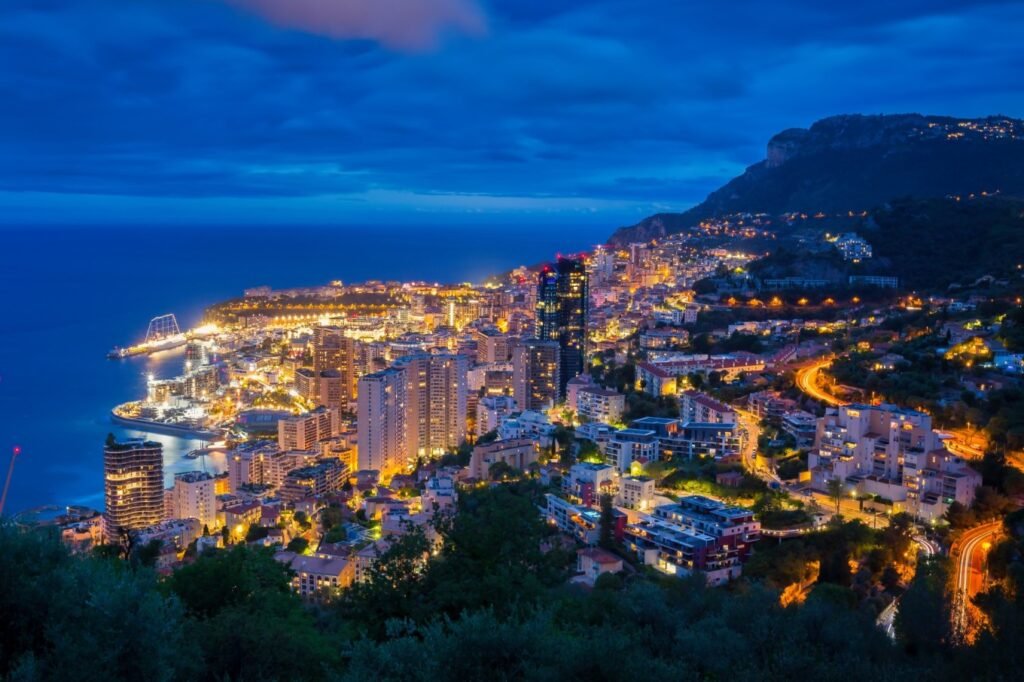
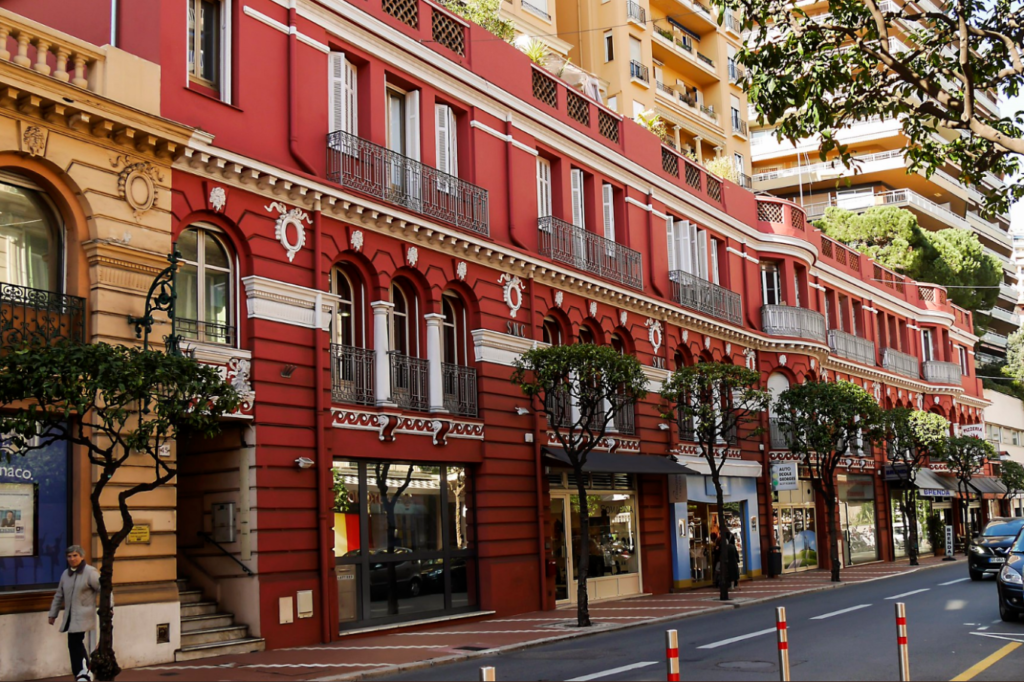
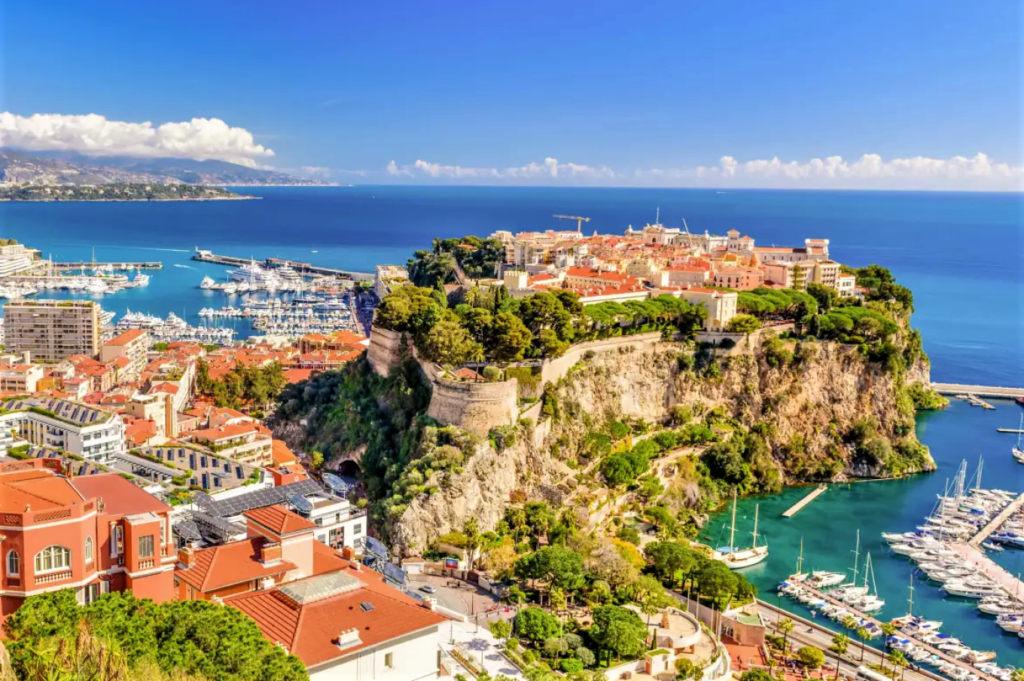
The Principality of Monaco is located on the southwestern Mediterranean Riviera in Europe, perched on a cliff with three sides bordered by France and the southern side facing the Mediterranean Sea. The border is 4.5 kilometers long, and the coastline stretches for 5.16 kilometers. The country is narrow and elongated, about 3 kilometers from east to west, and only 200 meters at its narrowest point from north to south. With mostly hilly terrain and an average elevation of less than 500 meters, Monaco is made up of the old city of Monaco and the surrounding areas that were developed later. The country covers just 1.95 square kilometers, making it one-fiftieth the size of Hong Kong and one-twentieth-thousandth the size of Switzerland. With a population of only 32,000, Monaco’s annual national economic turnover can reach over 9 billion euros, and its per capita income ranks among the highest in the world. It is considered one of the wealthiest countries globally, with an estimated one-third of its residents being millionaires, and its per capita GDP ranks second in the world.
What to see in Monaco?
Monaco consists of five main areas:
- Monaco-Ville (site of the Prince’s Palace) – home to the royal residence.
- Monte Carlo – known for its casino, shopping, restaurants, and hotels.
- La Condamine – located southwest of the Port, known for the harbor area.
- Fontvieille – the industrial zone of the principality.
- Moneghetti – home to the Exotic Gardens, offering scenic views and unique flora.

Monaco Old Town
Monaco-Ville, the oldest district of Monaco, is situated on a high cliff and is commonly known as “The Rock” (Le Rocher).

In 1297, François Grimaldi invaded the cliff, and his family has since ruled the Principality of Monaco. Grimaldi used cunning to conquer the cliff: he and his cousin, Lord Rainier I, dressed as Franciscan monks, gaining the trust of the current ruler who then opened the gate. After capturing the Grimaldi Rock, it became a fortress, later evolving into a palace, and is now the residence of the Prince of Monaco. The rock where Monaco-Ville stands is now hollowed out, containing seven levels of parking.

Upon arrival, you should use the escalators and elevators to reach the water level near the Oceanographic Museum. It is recommended to move along Saint Martin Street towards the center of the Old Town. Along the way, you will pass by Monaco Cathedral. After entering Rue de l’Eglise, you will reach the heart of the Old Town, where you can admire colorful houses and numerous souvenir shops. To head to the Prince’s Palace Square (Place du Palais), turn left onto Emile de Loth Street.

The Prince’s Palace of Monaco (Le Palais de Monaco), commonly known as the Princely Palace (Le Palais princier, Monaco language: Palaçi d’u Pri̍ncipu), has served as the official residence of the Prince of Monaco since 1297. The Principality of Monaco overlooks the Mediterranean from a height of sixty meters. Built in 1191, it initially served as a fortress for the Republic of Genoa. Throughout its history, the palace has been bombarded and besieged by numerous foreign powers. Since the late 13th century, it has been home to the Grimaldi family, who conquered the territory in 1297. The Grimaldi family governed the principality as feudal lords and, from the 17th century onward, as monarchs.

In the 19th and early 20th centuries, the palace and its residents became symbols of glamour and wealth, associated with Monte Carlo and the French Riviera. The pinnacle of this dramatic allure came in 1956, when American film star Grace Kelly married Prince Rainier III, becoming the Princess of Monaco. Today, the palace serves as the residence of Prince Albert II of Monaco.

Compared to previous years, the palace has undergone a complete transformation. Frescoes discovered behind damaged and restored paintings give the palace a Renaissance appearance. These frescoes, richer than before, transport visitors back five centuries to the period when the palace was built atop Monaco’s protective fortress. The Throne Room, featuring the Ulysses Nekuia and the Europe Hall, showcases some of the most beautiful works from that era. To offer a cohesive experience, each room has been rearranged with new exhibits. The flooring of the Green Antechamber has even been replaced.

To immerse yourself in the royal atmosphere, there’s nothing better than watching the changing of the guard at the Palace Square. Every day at 11:55 AM, the prince’s 124 guardsmen take turns performing this solemn, century-old ceremony, bringing joy to visitors.
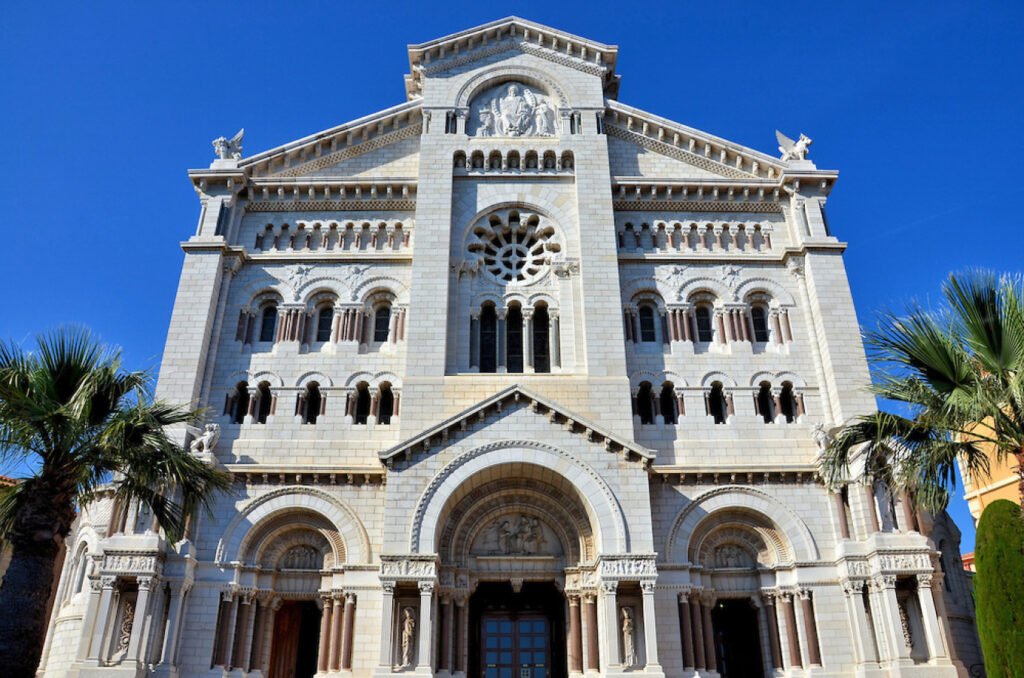
The Cathedral of Our Lady of the Immaculate Conception (French: Cathédrale de Notre-Dame-Immaculée), sometimes also referred to as Saint Nicholas Cathedral (after the name of the old church demolished in 1874) or Monaco Cathedral (French: Cathédrale de Monaco), is the cathedral of the Archdiocese of Monaco, located in Monaco-Ville. Many members of the Grimaldi family are buried here, including Grace Kelly and Rainier III.
The cathedral was built between 1875 and 1903 and was consecrated on June 11, 1911. It stands on the site of Monaco’s first parish church, which was dedicated to Saint Nicholas and built in 1252. Inside, next to the grand high altar and the bishop’s throne made of white Carrara marble, stands a table redesigned by Niçois painter Louis Bréa, dating back to the year 1500.
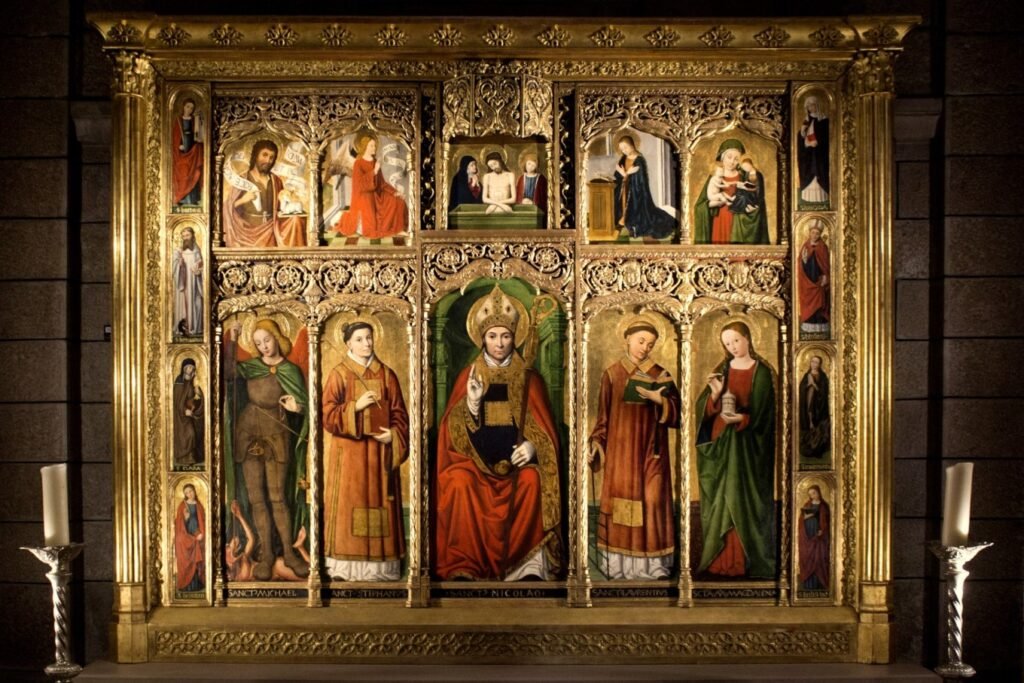
The Palace of Justice in Monaco-Ville is a small, fortress-like curved building that serves as the courthouse of Monaco-Ville, known as Palais de Justice. Built in 1930, it was constructed using Italian stone harvested from the sea, so if you look closely at the exterior walls, you will notice small mollusk shells embedded in the grey stone. This neo-Florentine palace is still in use by Monaco’s judiciary and is therefore not open to visitors.
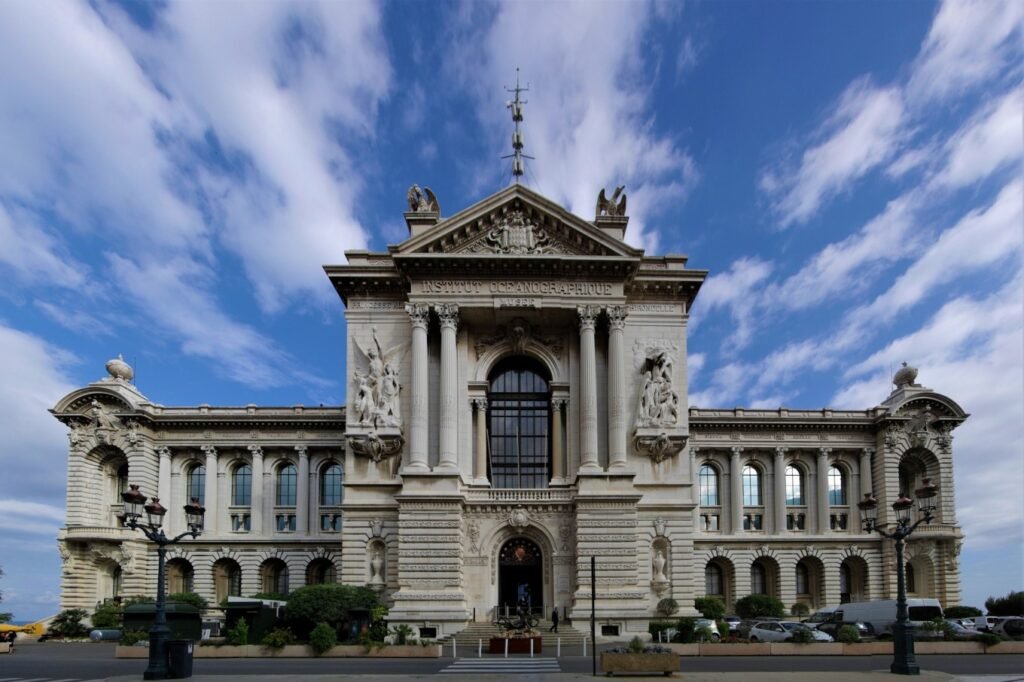
Built on the cliffs, the Oceanographic Museum of Monaco (Musée Océanographique de Monaco) has quietly guarded the sea from the edge of the rock for over a century. Founded in 1910 by Prince Albert I, who had a deep passion for the ocean, the museum is a significant marine research center with a stunning aquarium. Its 90 tanks immerse visitors in a breathtaking underwater world filled with a variety of fish. Don’t miss the 450-cubic-meter Shark Lagoon, which recreates the vibrant life of coral reefs. The museum also hosts special exhibitions focused on art or science.

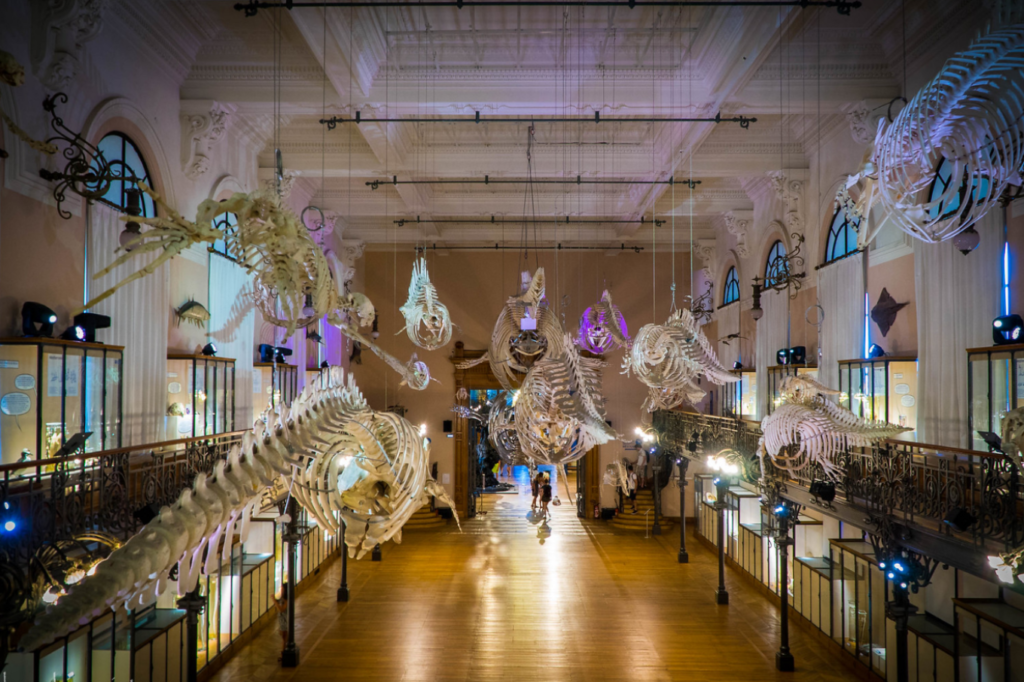
From the façade to the interior décor, every element of the Oceanographic Museum reflects a profound marine ambiance. Since its inauguration on March 29, 1910, this 6,000-square-meter ocean sanctuary has gained international acclaim. Visitors to this museum, perched just 85 meters above sea level, can admire over 6,000 marine species, establishing it as a center for cultural exchange, sharing global knowledge on ocean conservation.
From the aquarium to natural history exhibits, the shark lagoon to the panoramic terrace with Turtle Island, the museum offers a unique opportunity to learn how to understand, appreciate, and protect the oceans. The founder envisioned the museum as a fusion of “the two great powers of human civilization—art and science.” In alignment with this vision, the museum also hosts large-scale contemporary art exhibitions, featuring works by renowned artists such as Damien Hirst, Huang Yong Ping, Mark Dion, and Marc Quinn.

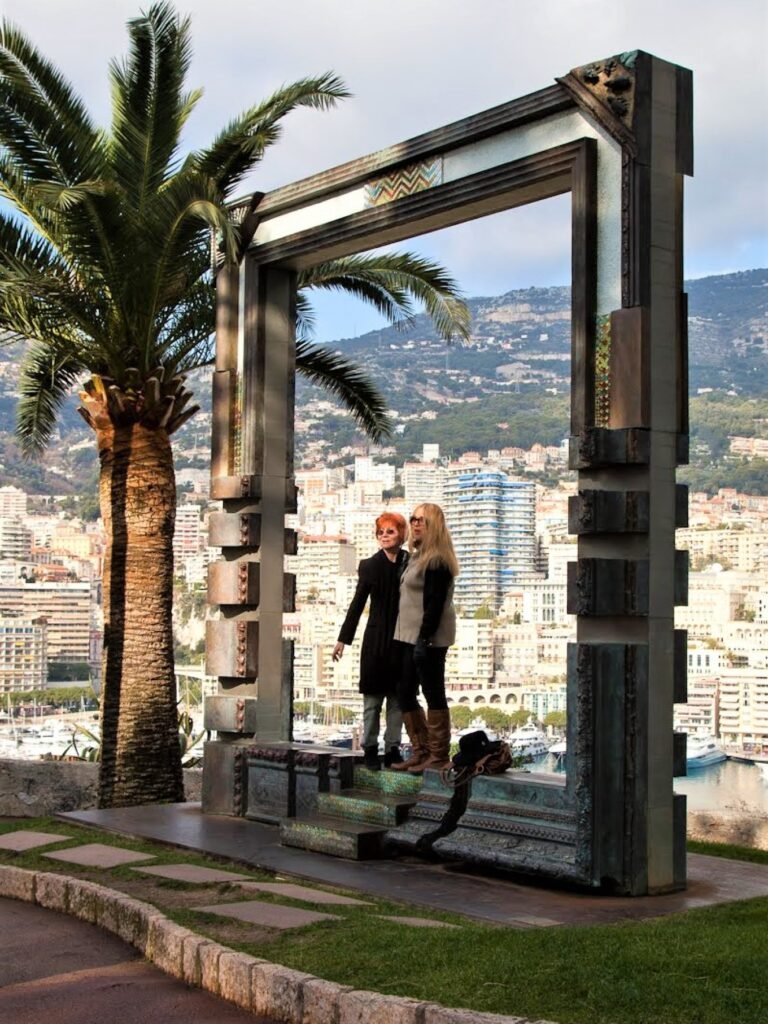
The Peace Frame, a monumental sculpture by South American artist Fred Nall Hollis, was gifted to Prince Albert II by La Fondazione Festival Pucciniano in 2006. Known as the Peace Frame, it has become one of the most iconic spots in the principality, where tourists enjoy posing inside the frame for photos. When heading towards Port Hercules, visitors will find this picture-perfect frame, comparable to the “Dubai Frame,” offering a stunning view of Port Hercules and the Monte Carlo district in the background. It is positioned to face the Pavillon Bosio, Monaco’s prestigious visual arts academy.
Perched on the rock overlooking Port Hercules, the frame offers a popular photo opportunity. Despite a large palm tree partially obstructing the view, the concept remains charming, don’t you think? Nearby, several busts are also on display. One commemorates Louis Aureglia (1892–1965), former President of Monaco’s National Council. Another stands outside the Pavillon Bosio art school, representing François-Joseph Bosio, a sculptor born in Monaco in 1768. He served as the official sculptor for Napoleon I and later for Kings Louis XVIII and Charles X. One of Bosio’s sculptures, Nymphe Salmacis (1826), a bronze work depicting the water nymph admiring her reflection, is placed in a fountain outside the State Department.
Monte Carlo
Monte Carlo is a district of Monaco, famous for being home to the iconic Monte Carlo Casino (Casino de Monte-Carlo). Strolling around the casino feels like stepping into a picturesque painting! Be sure to visit the landmark buildings surrounding the new square (la nouvelle place), flanked by the Hôtel de Paris and the Café de Paris. Your camera or smartphone will undoubtedly become essential for capturing the vibrant beauty of this area!
Between the magnificent la Petite Afrique garden and the unmissable “One Monte-Carlo” shopping district, you’ll be immersed in a dazzling array of sights.
Entering the lobby of the Monte Carlo Casino is free of charge and highly recommended. However, access to the gaming rooms requires a fee and a photo ID. On the right side of the entrance, slot machines are available, with a minimum cost of 5 euros to play.
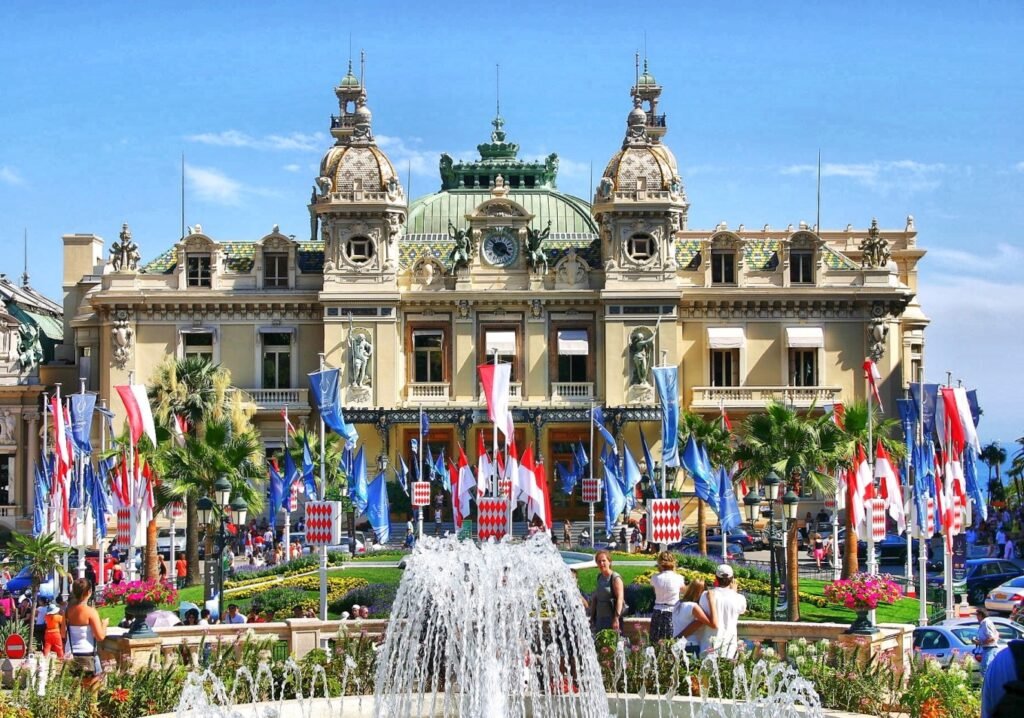

Condamine is the central district of the Principality of Monaco. Its landmarks include the Port Hercule, the Stade Nautique Rainier III, and Princess Antoinette Park. The farmers’ market at Place d’Armes, dating back to 1880, is a source of pride for locals, embodying the “authentic Monaco” spirit. The district’s name originates from the vulgar Latin term condominium, used in the Middle Ages to refer to land near a castle reserved for feudal lords and exempt from taxes, or occasionally, a territory under the joint control of two lords.

Condamine originated in the Middle Ages, meaning arable land. It is Monaco’s second-oldest district, only surpassed by Monaco-Ville. Situated between Monaco-Ville and Monte Carlo, it offers residents and visitors convenient transportation. In the early 20th century, travel writers recommended its hotels as “much cheaper than those in Monte Carlo” and closer to the “old town” (Monaco-Ville), as Monaco-Ville had no hotels. Gustave Saige, the official royal archivist of the late 19th century, described it as “the apex of the small semicircle of Port Hercule, sloping toward it like an amphitheater.”
Fontvieille
Fontvieille is the southernmost district of the Principality of Monaco. It was developed between the 1970s and 1990s by Italian architect Manfredi Nicoletti. Unlike other districts such as Monaco-Ville, Monte Carlo, and La Condamine, Fontvieille was built almost entirely on reclaimed land following designs by Italian engineer Gianfranco Gilardini, making it one of the principality’s youngest areas.
To address Monaco’s long-standing issue of limited land in this densely populated principality, land reclamation began in 1966 southwest of Le Rocher, in the Mediterranean Sea. In 1981, then-Crown Prince Albert II laid the foundation stone for the new district.
Port of Fontvieille, located in the Fontvieille district, serves as a marina along the Mediterranean coast of the French Riviera. Established in 1973, it spans approximately 8 hectares, offering nearly 275 berths, making it Monaco’s second-largest port.

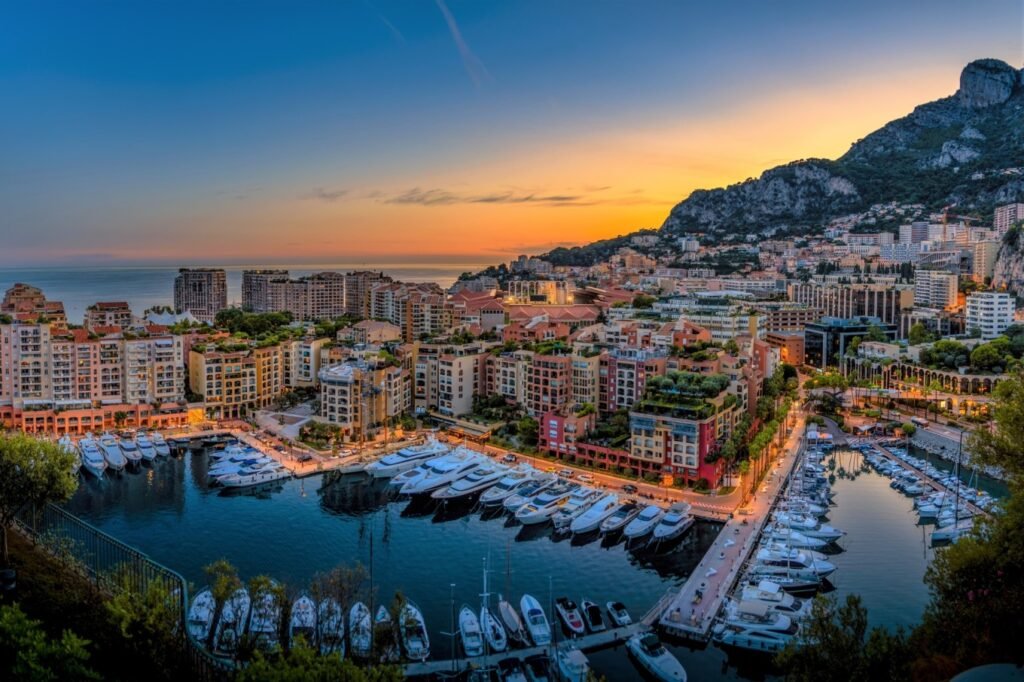
The marina covers 8 hectares and also serves as a significant real estate and commercial project. It is located at the foot of Le Rocher, near the Prince’s Palace and the Oceanographic Museum of Monaco. Additionally, it is close to the Monaco Zoo, the Louis II Stadium, the Monaco Heliport, and the Naval Museum of Monaco.
The Exotic Garde
The Exotic Garden of Monaco is a botanical garden situated on the edge of a cliff in Monaco. This garden, perched on the side of the rock, houses an impressive collection of 7,000 species of succulents and cacti. Their sharp spines will surely keep you from getting too close. Even if botany does not captivate you, the garden offers breathtaking panoramic views of the principality. The admission ticket also includes a visit to the Observatory Cave, a natural cave where you can observe stalactites and stalagmites.

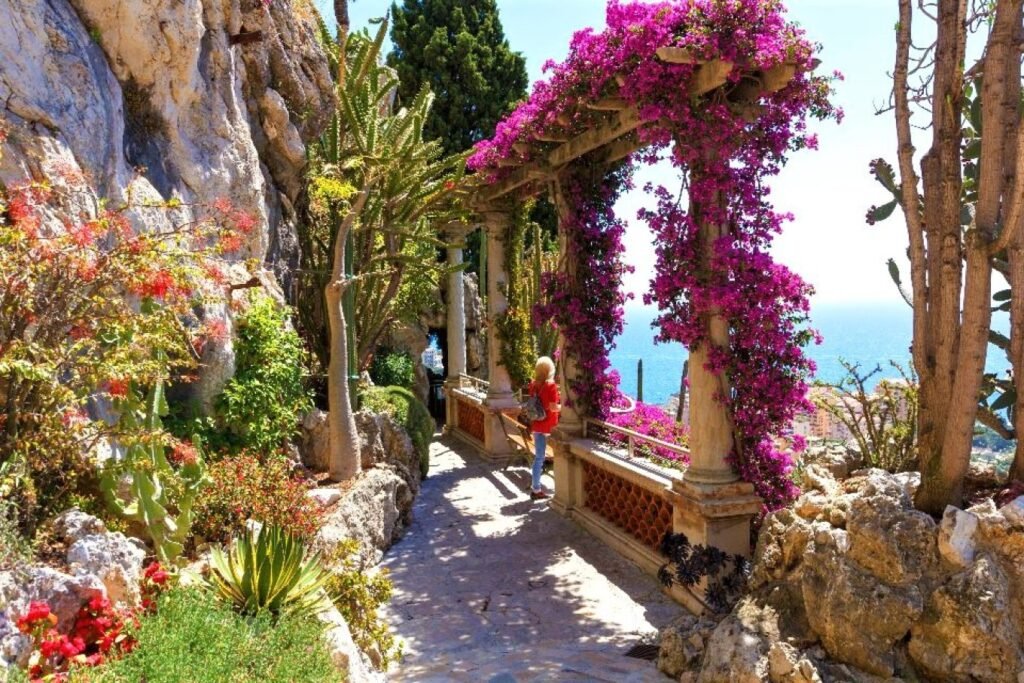
The succulents were brought from Mexico in the late 1860s. By 1895, Augustin Gastaud, the head gardener of Monaco’s national gardens, began planting these succulents in the Jardin St Martin.
The Exotic Garden is a municipally managed institution. Its origins trace back to the late 19th century, as part of an initiative by H.S.H. Prince Albert I. The garden opened to the public in 1933, receiving 25,000 visitors in its inaugural year. During the early 1980s, annual visitor numbers peaked at 600,000, though they have now settled around 350,000. From this unique garden, visitors can also enjoy sweeping views over the entire principality of Monaco.

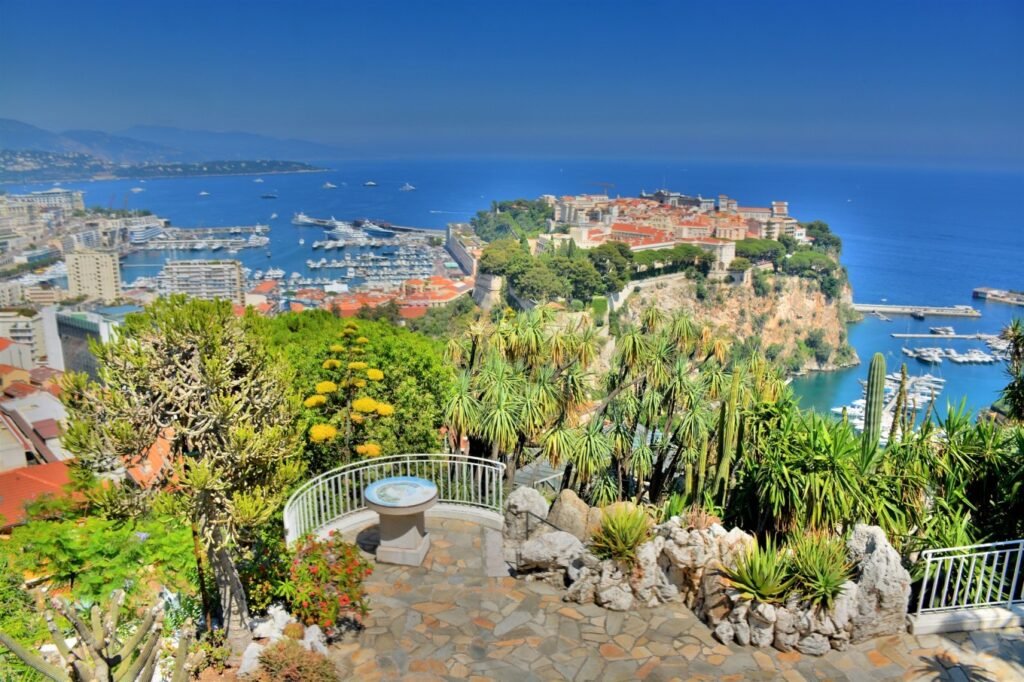
Practical Travel Tips for Monaco
Transportation
Traveling to Monaco can feel a bit overwhelming, as it’s known for being a playground for the rich. Whether you dream of spotting luxury cars or wish to admire the stunning coastline, Monaco will meet all your expectations and more. To avoid any inconvenience, keep these travel tips in mind.
Although Monaco doesn’t have an airport, it is easily accessible from Nice Airport, which is about a 30-minute drive away. From the airport, you can take a train or taxi to reach Monaco. As part of the Schengen Area, Monaco doesn’t require a visa for Europeans or Americans upon entry. Furthermore, border checks at the French border are minimal.
If you’re looking for an affordable way to explore Monaco, you have three main options: train, bus, and bicycle. Trains run every half hour, and buses typically operate between the train station and Monte Carlo. Renting a bike is also possible, but walking around Monaco is highly recommended.
Getting to Monaco from Nice
You can reach Monaco from Nice either by train or bus. Both take about 20 minutes, so pick the option that best fits your schedule. Monaco’s Monte Carlo Train Station is centrally located, making it easy to walk or use a day pass (€5.5) to explore the main attractions.
Buses run every 15 minutes on weekdays and every 20 minutes on Sundays and French holidays, with a journey time of about 45 minutes.
For the latest schedules of Bus #100 (Monaco/Menton), check the official timetable.
Ticketing Information
A single bus trip costs only €1.50, and you can purchase tickets from the driver upon boarding. However, if you’re using an existing Ligne d’Azur day pass, week pass, or ten-trip card, note that these are only valid until you arrive in Monaco. For travel within Monaco or Menton, you’ll need to purchase a new ticket.


Cuisine
Sometimes, food can make your trip even more memorable. While meals in Monaco might be on the pricier side, the flavors will surely leave a lasting impression on your palate. Thanks to its coastal location, Monaco takes pride in seafood-based dishes. Many meals are crafted with Mediterranean ingredients and paired with delightful French or Italian wines. Perhaps the most beautiful combination Monaco offers is its picturesque coastline along with exquisite food.
Barbajuan is considered the national dish of Monaco. This delightful summer dish showcases the influence of Mediterranean and French cuisine on Monegasque gastronomy. It is typically enjoyed on November 19th, Monaco’s National Day. Barbajuan is a gorgeous fritter encased in flaky pastry. The filling consists of creamy ricotta cheese and Swiss chard, resulting in a blend of leafy, creamy, and crispy flavors. In Monaco, these delicious snacks are hard to resist. Barbajuan is also popular along the French Riviera, making it one of the most exciting culinary highlights of Monaco.

French Seafood Soup
This is a traditional dish inspired by Monaco’s stunning maritime passages. It is a rich and indulgent stew, featuring a variety of seafood immersed in a smooth butter sauce. The vibrant color of this flavorful Monegasque dish comes from the saffron simmered within, giving the stew a unique and delightful taste. Chefs in Monaco have perfected this hearty dish, making it a must-try for any food lover.

Pissaladière
This Monegasque delicacy can be served simply or elaborately but is always delicious! It might remind you of pizza at first glance, but it offers more than that. This rich and indulgent dish uses a flatbread base topped with sweet caramelized onions, olives, and anchovies. Each bite delivers a perfect balance of savory and sweet, making it a treat for all palates.

Other Tips
The best time to visit Monaco is definitely May and June, when the weather is mild, and visitors flock to enjoy it. However, many travelers also consider visiting in April or October. An arts festival is held in April, showcasing contemporary dance performances by renowned troupes. In May, motorsport fans gather in Monaco for the Formula 1 Grand Prix. You might also attend the Monte Carlo Open tennis tournament, usually held in March. Another popular event is the BaldÉte festival, celebrated in June. While Monaco thrives during the summer, winter offers lower accommodation prices.
If you want to experience gambling at the famous Monte Carlo Casino during your visit, it’s essential to follow the rules. The elegant interior allows participation for those aged 18 and over, with valid identification required for entry. A dress code mandates that men wear ties and jackets, while women must be in smart casual attire. Visitors are limited to a 30-minute stay.
Monaco enforces strict laws that apply to tourists as well. Walking around barefoot or in swimwear outside the beach will incur a fine. Swimwear is only permitted on the beach. Rigorous law enforcement ensures Monaco remains one of the safest places on Earth, often referred to as Europe’s “safest square mile,” with a well-equipped police force.
Due to its proximity to France, French is the main language spoken in Monaco. Knowing some French will make it easier to navigate and interact. However, many locals also speak English and Italian, which helps visitors during their stay. Be prepared to encounter occasional language barriers if you don’t speak French.


